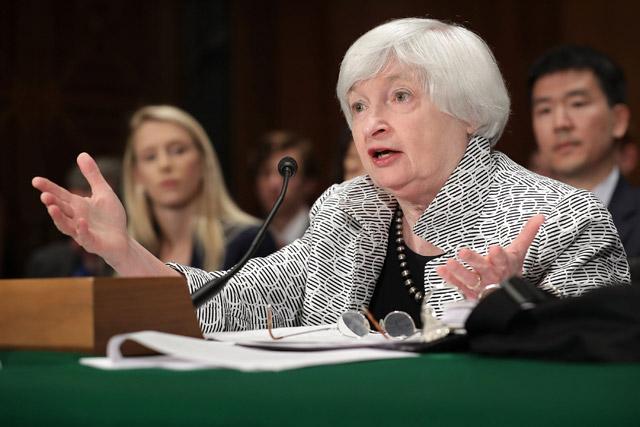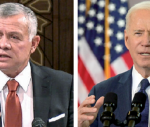You are here
Central banks fret stimulus efforts are falling short
By Reuters - Sep 19,2015 - Last updated at Sep 20,2015
LONDON — The world's leading central banks are facing the risk that their massive efforts to revive economic growth could be dragged down again, with some officials arguing for bold new ideas to counter the threat of slow growth for years to come.
A day after the US Federal Reserve (Fed) kept interest rates at zero, citing risks in the global economy, the Bank of England's (BoE) chief economist said central banks had to accept that interest rates might get stuck at rock bottom.
In Japan, where interest rates have been at zero for more than 20 years, policy makers are already tossing around ideas for overhauling the Bank of Japan's (BoJ) huge monetary stimulus programme as they worry that it will be unsustainable in the future, according to sources familiar with its thinking.
Separately a top European Central Bank (ECB) official said the ECB's bond-buying programme might need to be rethought if low inflation becomes entrenched. But he added monetary policy would not restore economic growth over the long term.
More than eight years after the onset of the financial crisis, the economies of the United States and Britain are growing at a healthier pace, in contrast to those of Japan and in many eurozone countries.
But the risk of a sharp slowdown in China and other emerging economies has prevented the Fed from starting to raise interest rates and is being watched closely by the BoE.
Investors mostly think that the Fed's delay will be short-lived and that it could begin raising rates before the end of the year, followed a few months later by Britain's central bank.
But BoE's chief economist Andy Haldane, who has long been gloomy about the chances of a sustainable recovery, said the world might in fact be sinking into a new phase of the financial crisis, this time caused by emerging markets.
In a speech on Friday that summed up the dilemma for many central banks, he said policy makers had a lot less room for manoeuvre than in the past.
Haldane indicated that the BoE's next move might be to cut its rates below their record low 0.5 per cent rather than proceed with a hike as widely expected.
But even when interest rates do start to rise, he warned they could be pulled back again to near zero by future problems.
"If global real interest rates are persistently lower, central banks may then need to think imaginatively about how to deal on a more durable basis with the technological constraint imposed by the zero lower bound on interest rates," he said.
"That may require a rethink, a fairly fundamental one, of a number of current central bank practices," Haldane added.
Radical ideas
According to Haldane, possible solutions included giving central banks higher inflation targets or making their emergency bond-buying programmes a permanent part of their armoury, although both options had their downsides.
He raised a third and even more radical possibility: governments issuing electronic rather than paper money, making it feasible for central banks to apply negative interest rates and break the current floor of borrowing costs at zero.
One of the Fed's policy makers even called for the US central bank to set a negative interest rate at Thursday's meeting. But for now, most investors are betting on a less dramatic path for the world's central banks.
Anna Stupnytska, global economist at Fidelity Worldwide Investment, one of the world's biggest fund managers, said the Fed and the BoE remain on course to carry out a few interest rate hikes while the BoJ and the ECB carried on buying bonds.
She hopes the combination of technological advances, more spending by governments on infrastructure and reforms to boost competitiveness will also eventually help move the world economy out of its low-growth, low-inflation rut.
The Fed kept interest rates unchanged on Friday in a bow to worries about the global economy, financial market volatility and sluggish inflation at home, but left open the possibility of a modest policy tightening later this year.
In what amounted to a tactical retreat, Fed Chair Janet Yellen said developments in a tightly linked global economy had in effect forced the US central bank's hand.
"The outlook abroad appears to have become less certain," Yellen told a news conference after the Fed's policy-setting committee released a statement following a two-day meeting.
She said that a recent fall in US stock prices and a rise in the value of the dollar already were tightening financial market conditions, which could slow US economic growth regardless of what the Fed does.
"In light of the heightened uncertainty abroad ... the committee judged it appropriate to wait," Yellen added.
The policy statement also nodded squarely to the global economy as a decisive variable within Yellen's "data-dependent" Fed, warning that recent developments abroad and in financial markets might restrain economic activity somewhat and likely put further downward pressure on inflation in the near term.
But the Fed maintained its bias towards a rate hike sometime this year, while lowering its long-term outlook for the economy.
Fresh economic projections showed 13 of 17 Fed policy makers foresee raising rates at least once in 2015, down from 15 at the last meeting in June.
Traders in futures markets cut bets that the central bank would lift rates by December to around a 47 per cent probability, from 64 per cent before the release of the policy statement.
"We're in the same situation we were in before, which is uncertainty about when are they going to move," said John Bonnell, a senior portfolio manager at USAA Investments in San Antonio, Texas.
Four Fed policy makers now say rates should not be raised until at least 2016, compared to two who felt that way in June. The Fed has policy meetings in October and December.
In deciding when to hike rates, the Fed repeated it wanted to see "some further improvement in the labour market", and be "reasonably confident" that inflation will increase.
'More dovish'
Taken as a whole, the latest Fed projections of slower gross domestic product (GDP) growth, low unemployment and continuing low inflation suggest that concerns of a so-called secular stagnation may be taking root among policy makers. One policy maker even suggested a negative federal funds rate.
The median projection of the 17 policy makers showed the Fed expects the economy to grow 2.1 per cent this year, slightly faster than previously thought. However, its forecasts for GDP growth in 2016 and 2017 were downgraded.
The Fed also forecast inflation would creep only slowly towards its 2 per cent target even as unemployment dips lower than previously expected. It sees the unemployment rate hitting 4.8 per cent next year and remaining at that level for as long as three years.
The Fed's projected interest rate path shifted downward, with the long-run federal funds rate now seen at 3.5 per cent, compared to 3.75 per cent at the last policy meeting.
Fed officials like board member Jerome Powell and Atlanta Fed President Dennis Lockhart in recent months had publicly endorsed a September rate hike, forming a near majority along with long-standing inflation hawks like Richmond Fed President Jeffrey Lacker.
Only Lacker, who wanted to raise rates by a quarter percentage point, dissented on Friday.
Related Articles
WASHINGTON — Federal Reserve (Fed) Chair Janet Yellen conceded Wednesday the Fed's rate increase could hurt some emerging economies, but tha
WASHINGTON — Federal Reserve (Fed) Chair Janet Yellen said on Wednesday that even as the US economy grows stronger and employment expands, s
The world's major central banks are returning to a more opaque and artful approach to policymaking, ending a crisis-era experiment with explicit promises that they found risked their credibility and did not substitute for action.
















